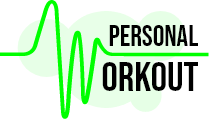Myth of Red Meat – Superfood or Cancer Catalyst?
I admit – the title is provocative. But that’s exactly how dogmatic and black-and-white today’s discussions around nutrition have become. Whether it’s about meat, dairy, or soy, things are quickly labeled as either “good” or “bad” – with little room for nuance. If you want to understand why your body needs protein and how much is necessary for fat loss or muscle building, this blog post is for you. This article focuses specifically on meat as a source of protein. Just last week I read that chicken, when consumed above a certain weekly amount, is now considered harmful. Until now, only excessive red meat was viewed as problematic. And now even white meat is under fire? Right in the middle of the barbecue season! All the more reason to shed some light on this topic.
Red Meat – Curse or Blessing?
First, I’d like to highlight an important distinction. If you’ve read our previous blog posts, you’ll know that we support dietary approaches like Ancestral, Paleo, or Mediterranean. All of these rely on a natural and traditional way of eating that includes a wide variety of foods in the most unprocessed form possible.
For this reason, it should be clear from the start that we are not talking about processed meat products like cold cuts (ham, salami, etc.). It’s obvious that such products come with various disadvantages. What we’re really interested in is the data regarding unprocessed red meat.
A comprehensive meta-analysis published in Nature shows a slight correlation – “weak evidence” – between unprocessed meat and colon and breast cancer (6% and 3% respectively), as well as heart disease (1%). A 1% increase was also reported in connection with a higher risk of type 2 diabetes.
Now, it’s important to note: just because a correlation has been observed between certain diseases and red meat consumption, that doesn’t automatically mean the relationship is causal. Whether red meat is actually responsible for these health issues – especially with such a small correlation of 1% – requires more detailed investigation.
For example, meat consumption has little to no effect on insulin levels. This suggests that these might be so-called “false positive” correlations – in other words, relationships that aren’t truly connected. A classic example of a false positive is a village where there are lots of storks and lots of babies. Do the storks bring the babies, or is there a causal link behind that correlation? Probably not… The real reason might be the drinks consumed with a meat meal, or the side dishes typically eaten with meat.
When it comes to nutrition studies, there’s a general challenge: the effects of individual foods can’t easily be tested in isolation in a lab setting (for good reason). As a result, it’s hard to control what participants are actually eating. Therefore, the impact of single foods is difficult – if not impossible – to examine separately. (Mai Thi Nguyen-Kim explains this problem very clearly in her longer video on the topic of sugar.)
What I also found interesting in the Nature article is the point that we should ask ourselves: what do we eat instead of red meat when we cut it out? There are certainly reasonable alternatives. But especially during the barbecue season, we often see people turning to processed foods like veggie schnitzels or vegetables in aluminum trays. Why aluminum is problematic is something I’ll explain in the next section.
IS IT THE MEAT OR THE PREPARATION THAT IS THE PROBLEM?
A recent report from NDR also addresses the topic of “red meat.” What’s particularly interesting is that the issue seems to be less about the red meat itself and more about grilling – which appears to be the real source of harmful substances. Specifically, the concerns are as follows:
- PAHs: When fat drips into the coals, smoke is produced. This smoke contains polycyclic aromatic hydrocarbons (PAHs), which are carcinogenic. Yet it’s precisely this smoky charcoal flavor that gives grilled meat its beloved taste.
What can you do? Use leaner cuts of meat and/or pat the meat dry beforehand. A desired flavor can also be achieved with a (low-fat) marinade. Using herbs in the marinade can reduce HAA formation (see below) by up to 80%. Switching to a gas or electric grill may also help, as fewer harmful substances reach the meat. - HAAs: When protein burns, heterocyclic aromatic amines (HAAs) are formed. These are also carcinogenic.
What can you do? Sear the meat briefly at high heat, then continue grilling it indirectly – that is, not directly over the flame. This way, fewer HAA compounds end up in the meat. - Grill containers: Aluminum trays or Teflon pans are often used for grilling. While aluminum only melts at 660°C, it can leach into the meat—and then into the body—when it comes into contact with salt or acids. Aluminum is toxic to bones, kidneys, and the brain (linked to Alzheimer’s risk). Teflon begins to break down at 300°C, a temperature easily reached during grilling.
What can you do? Use cast iron or copper pans instead. - Side dishes: Eating a sausage with bread on an empty stomach gives the sausage more time and space to release potentially harmful substances.
What can you do? Pair your meal with fiber-rich side dishes like vegetables to reduce the risk, as this limits the meat’s contact with the intestinal lining.
Greater risk from meat consumption or from nutrient deficiency?
Red meat is rich in essential micronutrients, trace elements like iron and zinc, and vitamins A, E, and B—especially B12. It also contains compounds such as creatine and carnitine, which are made from essential amino acids and play important roles in the body, such as transporting fatty acids into the mitochondria.
Let’s take a closer look at vitamin B12. It is scientifically proven that adequate B12 intake is almost exclusively achievable through animal products, as vitamin B12 is found almost solely in them. This means that vegetarians who consume dairy and eggs can meet their needs—provided they do so consciously. Vegans, however, must supplement vitamin B12. Learn more about why veganism can be problematic from a health perspective (German only).
There are some plant-based foods often mentioned as B12 sources, such as seaweed types like nori, chlorella, or spirulina, and certain mushrooms like shiitake or chanterelles. However, these either contain only very small amounts or B12 analogues (pseudo-vitamin B12), which the human body cannot effectively use and which may even block the absorption of real B12. Nori, for example, which is used in sushi, has shown to contain small amounts of bioactive B12—but the required quantity would be very high.
WHY IS VITAMIN B12 (COBALAMIN) SO IMPORTANT?
- Blood formation: It plays a central role in the production of red blood cells.
- Nerve function: It is essential for a healthy nervous system and the myelin sheath that surrounds nerve fibers.
- Cell division: It is involved in processes of cell division and DNA synthesis.
A deficiency can lead to anemia, nerve damage, fatigue, and concentration problems.
I asked ChatGPT what possible health risks are associated with a B12 deficiency. In addition to some unpleasant but not overly serious side effects, the following severe symptoms were mentioned:
Elevated homocysteine levels, which can increase the risk of cardiovascular disease. Depression, muscle weakness, and unsteady gait. In pregnant women, it can lead to serious developmental disorders in the child.
Zinc deficiency can also increase the risk of depression, chronic inflammation, and frequent infections.
These are just examples. What I want to highlight with them: anyone who chooses to follow a restrictive diet—of any kind—should make sure they understand and address the potential health risks involved.
IRON AS A CAUSE OF HEALTH PROBLEMS?
According to the NDR report, the reasons why red meat is considered unhealthy remain unclear.
“One theory is that an excess of iron from animal products—so-called heme iron—may cause cellular damage, dysfunction, or even genetic mutations, which in turn can lead to cancer.”
This explanation makes a lot of sense, as free iron in the body is highly toxic. The copper-containing proteins ceruloplasmin and hephaestin are mainly responsible for converting it into “safe” Fe³⁺. However, copper deficiency is very common today. More on this in our blog post on iron and anemia.
If we now consider that the iron from red meat might be the actual problem, shouldn’t iron infusions for vegetarians and pregnant women be reconsidered more critically?
But it’s not just iron that’s prescribed as a supplement. The same goes for other nutrients that are naturally present in red meat—B vitamins, zinc, and creatine, to name just a few. Put somewhat bluntly, one could say: we avoid one thing and then supplement with lab-made substitutes. Does that make sense—and is it really “healthier”?
Other animal protein sources such as chicken, fish, eggs, and dairy products.
The study on chicken meat cited by 20 Minuten lasted 4 weeks, included 113 participants divided into 3 groups, and used cholesterol levels as the basis for assessing whether someone is healthy or not. This study design is questionable due to the small sample size. Additionally, the measured biomarker—cholesterol level—is not actually the main health concern; it’s the oxidation of lipids. For more on this, read the article “The Major Risk Factors for Atherosclerosis and Cardiovascular Disease.” For these two reasons, the significance of this study should be viewed critically.
If you’d like to know more about cholesterol and whether eggs raise cholesterol levels, you should check out this article by a cardiologist on Journalmed.de.
As for dairy products, the situation is similar to that of meat. There are studies claiming that milk promotes cancer, and others suggesting it protects against cancer. So once again, as is so often the case with nutrition: it’s complicated.
And last but not least, the same applies to fish—it’s rich in protective omega-3s but also often contaminated with heavy metals.
So what about plant-based protein sources?
PLANT-BASED SOURCES OF PROTEIN, IRON AND VITAMIN B12
I don’t like copying, but I can’t put it better than the NDR article does:
“Both animal protein and animal-based iron are more easily absorbed by the body than their plant-based counterparts. Still, there are meat-free alternatives: legumes such as beans, lentils, and chickpeas are good sources of protein, but nuts, seeds, grains, vegetables, and of course dairy products also contain protein. Plant-based iron is found in legumes, whole grains like oats, nuts and seeds, as well as spinach, chard, and chanterelle mushrooms. One trick to help the body absorb iron more effectively is to combine iron-rich foods with those high in vitamin C.”
It should be noted that plant-based non-heme iron is absorbed at a much lower rate (around 5%) compared to heme iron from animal sources (around 20%).
Vitamin B12 is found almost exclusively in animal products and must be either artificially added to foods or supplemented.
CONCLUSION
So is red meat unhealthy? Here’s what I claim:
Unprocessed red meat of high quality (from grass-fed animals, without antibiotic use), prepared gently, is very healthy in reasonable amounts and provides us with essential micro- and macronutrients. What constitutes a reasonable amount depends on many individual factors. As a guideline, the DGE (German Nutrition Society) recommends 300–600g per week.
I also agree with the statement from the NDR article that studies on red meat are mostly based on participants’ self-reporting and often ignore the other foods in their overall diet:
“Study results are partly disputed. Some researchers argue that the evaluated studies, due to their design, cannot clearly establish a cause-and-effect relationship. Moreover, the correlations are rather weak, and other risk factors for cancer and other diseases should receive more attention—such as alcohol and severe obesity… Not least, people who consume a lot of red and processed meat often tend to have a generally less healthy diet: they typically consume more salt, more saturated fats, and more calories, all of which can also negatively impact health.”
Maybe it’s getting a bit repetitive, but—as is so often the case—the conclusion of this article is: it’s in the mix! From a health perspective (putting ethical reasons aside), neither a carnivore diet (based solely on meat) nor complete meat avoidance is ideal. Additionally, meeting your protein needs without animal products is quite difficult. That said, it doesn’t mean you should eat meat every day. Better to eat less, but choose high quality. Happy grilling!
SOURCES
- https://www.20min.ch/story/poulet-ist-so-ungesund-wie-rotes-fleisch-416951880952
- https://www.nature.com/articles/s41591-022-01968-z
- https://www.ndr.de/ratgeber/gesundheit/Rotes-Fleisch-Ungesund-bei-uebermaessigem-Verzehr,fleisch588.html
- ChatGPT Version 4.0
- https://www.sciencedirect.com/science/article/pii/S0002916522011492?via%3Dihub#tb1fn1
- https://www.journalmed.de/patienteninfos/eier-cholesterin-was-kardiologe-sagt
- https://www.alta-klinik.de/ratgeber/vitamin-b12/vitamin-b12-in-lebensmitteln/
Challenge of the Month
What Clients Say





















